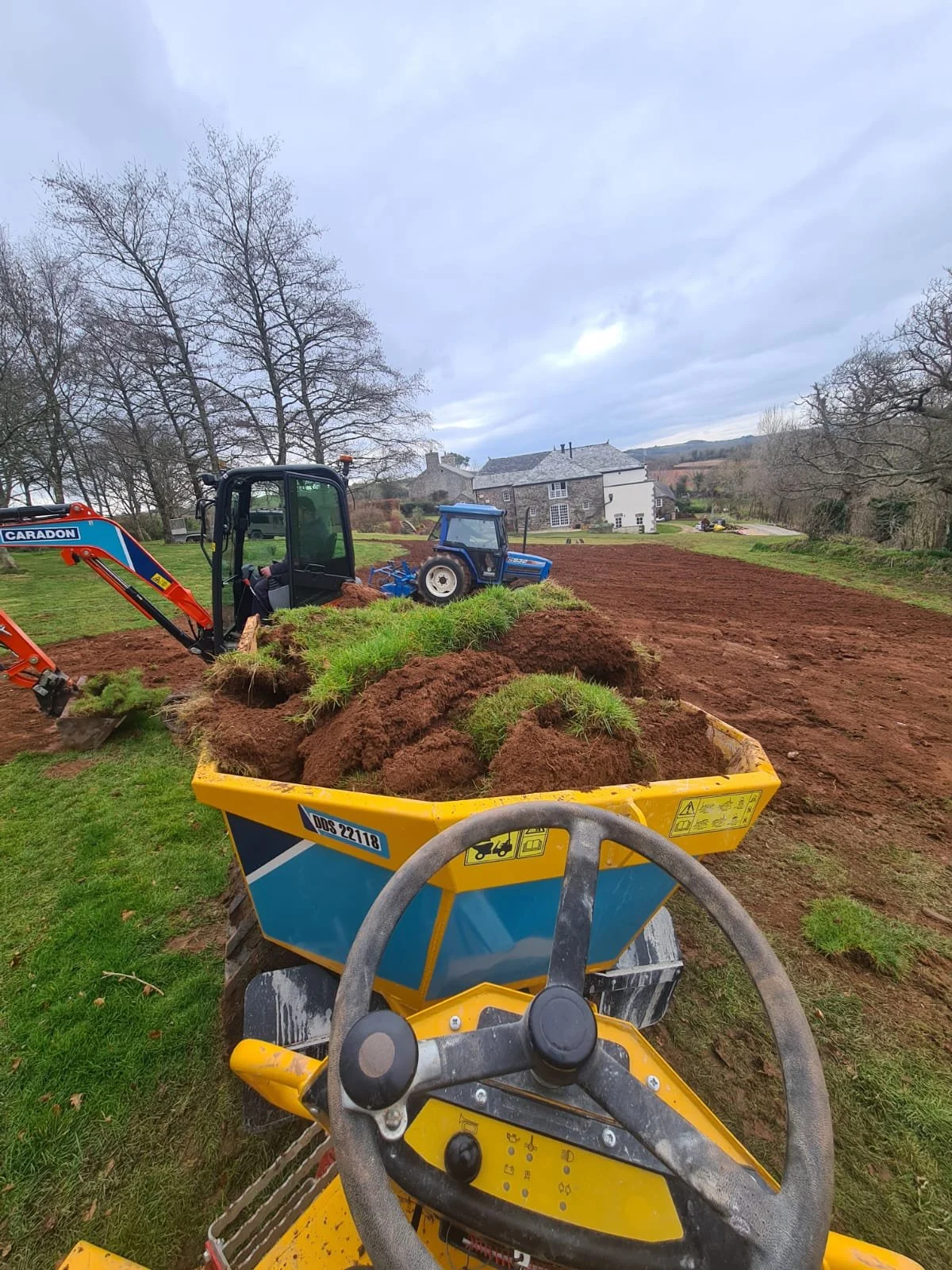
Wildflower Meadow Creation
in Devon and Cornwall
Newton Ferrers & Noss Mayo, Totnes & Dartington, Salcombe & Kingsbridge, Dartmoor
Unique Habitats
Creating a wildflower meadow not only brings colour throughout the seasons with a flower rich landscape but creates amazing habitat for thousands of species from bees & butterflies to birds & dormice. A highly beneficial ecosystem for a reduction in maintenance compared to a formal lawn or tended pasture.
Tragically almost all of our wildflower meadows have been lost to modern agricultural methods.. As a result we are losing many native invertebrates that are dependant on specific wildflower species that we do not see in cultivated spaces.
Consultation & Design
Vital for determining your aims, needs and preferences, environmental and situational conditions, your sites cultivational history along with soil fertility and health.
An initial obligation site visit and informal chat, followed up with a comprehensive site survey, design and project plan to suit all individual situations.
Meadow Creation in Devon & Cornwall
Soil fertility, site location and project size are all factors for the methods to be used.
In order to create a thriving and sustainable wildflower meadow minimal nutrients are required. Typically the turf and topsoil are removed before mechanical rotovation, bringing poorer subsoil to the surface. Several options follow;
Wildflower turf, pre grown on a trusted partners site with a choice of different designs can offer an instant result within the coming season, additionally there is minimal risk for seeds not germinating and developing.
Our own wildflower design involving seed sewing in tandem with plug planting of self seeding and spreading perennials.
Carefully selected seed mix based upon your site location and conditions.
During the initial development stage several site visits will be undertaken to ensure a healthy and balanced meadow is establishing.
Meadow Care & Services
To continue to thrive your meadow needs specific seasonal care.
To keep optimum fertility an established meadow should be cut once to twice per season with the cuttings collected and removed.
There are dominant perennials commonly found in wildflower meadows such as docks, thistles, nettles and brambles that need to be selectively reduced to maintain a balance of diversity.
In developed or ageing meadows plug planting and targeted seed scattering is often needed to keep a species rich site.
To reduce fertility in existing or upcoming grasses the introduction of yellow rattle and eyebright with semi parasitic properties can be included.
FAQs
Where do you work?
We install wildflower meadows across Devon & Cornwall including; Fowey, Charlestown, Padstow & Rock, Newton Ferrers & Noss Mayo, Salcombe & Kingsbridge, Dartmoor & Bodmin Moor.
If I stop mowing my lawn will this become a wild flower meadow?
Stopping mowing your lawn is a great start to increasing the diversity of your garden and will allow you to see what grows in it, but it will more than likely increase the spread of invasive plants that are so often found on cultivated meadows such as docks, thistle and hogweed due to seed shedding.
The real key in increasing the biodiversity on your meadow is by decreasing its fertility, which you won’t get from just stopping mowing. You’ll actually need to mow for this and to collecting all of the clippings to stop any further fertilisation. Soon you will see more open spaces in your lawn as the growth of grasses will slow down and new species will appear.
Do wild flower meadows need maintenance?
Whilst wild flower meadows are much lower in maintenance than a traditional lawn they should still have a degree of care and management.
During the first years of development the removal of invasive plants will be vital to support growth and establishment of desired wild flowers.
Wild flower meadows will need to be cut at least once a year and need collection of cuttings to keep the soil fertility low. We recommend to cut at least once in February to allow in light to the ground and a good new start for the season. Another cut can be done in August, called the “Hay cut”, to allow a second flush of flowers. Following this it is recommended to leave the high structure of the meadow throughout the winter to provide habitat for insects for overwintering.
Should I collect the cuttings when mowing a meadow?
When topping a wild flower meadow we advise you to cut no lower then 6 cm and collect the cuttings to keep the low fertility as explained above.
If you don’t collect cuttings it will fertilize the ground and allow dominating grass and invasive plants to take over. Your wild flowers are depending on poor soil for healthy growth and competition.
I have an ageing wild flower meadow, can you help?
If your wild flower meadow has not had the best care and attention it will most probably show in low diversity and a high number of invasive plants such as docks, thistles and hogweed and high, thick grass.
The first step would be 3 cuts throughout the season and collection of the cuttings, as well as introducing yellow rattle seeds in September or plug plants in spring which will work semi parasitically to reduce dominant grasses and decrease fertility.
The next step in following years would be plug planting or seed sowing patches of suitable wildflowers to slowly increase the diversity and bring your meadow back to full health.



